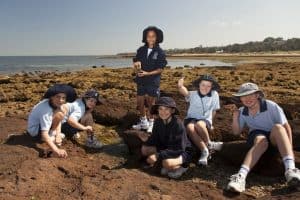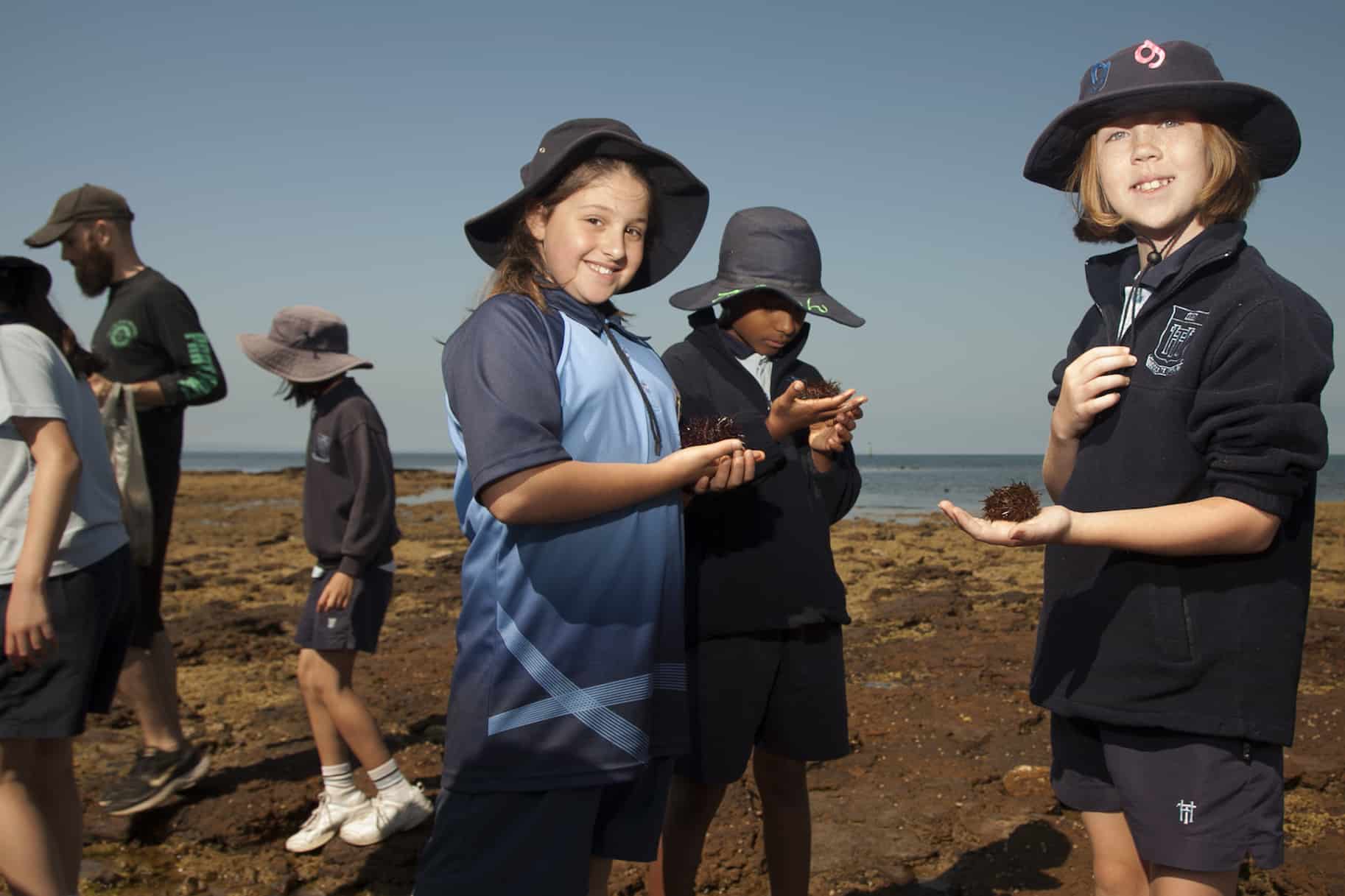Tidal Survival
-
Biodiversity
-
National Parks and Sanctuaries
-
Species Adaptations
-
Ecosystems
-
Human Impacts



Program Overview
The intertidal platform and sandy foreshore of Ricketts Point Marine Sanctuary provides an extraordinary learning environment. Through personal observations, students will uncover the structural and behavioural adaptations that enable organisms to survive in challenging habitats. Educators lead a practical investigation in the intertidal zone to demonstrate how the growth and survival of living things can be affected by the physical conditions of their environment.
Groups conduct a marine litter audit to determine how human activities can affect marine species and devise positive actions to protect the biodiversity of marine ecosystems. Students will discover the importance of Victoria’s Marine National Parks and Sanctuaries and the techniques and regulations used to manage these special areas.
We offer a two and a four hour program option which can be tailored to suit different levels of understanding, from topic introduction through to topic consolidation.
Program Options and Activities
There are two options for this program. A two-hour program includes the first three of the activities listed below (unless you request an alternative) and a 4 hour program which includes all 5 activities. All equipment including binoculars are provided.
Features and Functions
Students will uncover the array of structural and behavioural adaptations of intertidal organisms by examining a variety of marine artefacts and specimens.
Survival in the Intertidal
By undertaking a practical investigation, students will discover how the growth and survival of organisms is dependent on the physical conditions of their environment. Students’ observational skills will be called upon to determine how the adaptations of intertidal species enable them to survive in this harsh and highly changeable environment.
Birds of the Bay
Working in groups, students will observe and identify common bird species found within the sanctuary. They will compare the different adaptations of aquatic birds’ versus those that inhabit the coastal vegetation environments. Note if birds are not numerous enough to make observations on the day, Managing Special Places will replace it in the 2 hour program.
Managing Special Places
Marine Protected Areas play a vital role in the conservation of species biodiversity. Students will discover the history behind Victoria’s Marine National Parks system and why Ricketts Point was selected as a site. The educators will lead a guided walk through the sanctuary to highlight the various management techniques used to maintain a Marine Protected Area.
Plastic Pollution
Human activities, such as littering and waste production, are having a detrimental impact on the survival of many marine species. The class will perform a marine litter audit on the foreshore to determine the most common types of debris within the sanctuary. Through group discussion, students will brainstorm how litter affects marine species and devise possible solutions to this global environmental issue.
Both programs conclude with:
Call to Action
By defining their connection to the coastal environment, students will develop everyday actions they can take to reduce their impact on the marine environment.
Certificate and Conservation Code to reinforce learnings
Post event, schools will be issued a Certificate of Participation and Conservation Code for each class which students are encouraged to sign and hang in the classroom as a reminder of their learnings and their commitment to protect the environment.
We encourage schools to connect with us a few weeks or months after school excursions to share behavioural changes made by the students or activities they have undertaken as a result of their learnings during “Tidal Survival” so we may share success stories to inspire others, monitor the ongoing impact of our programs and make relevant updates or changes if required.
Restrictions: The program is dependent on tides, therefore available dates are limited. More than four classes can be accommodated by special request, however is only available during a four-hour program.
Equipment needed: Appropriate clothing and footwear (long sleeve top, long pants, jacket, hat/beanie, soft-soled shoes e.g. runners). Students participating in the two-hour program will need to bring a snack and water. Classes undertaking the four-hour program will also need to bring lunch.
Victorian Curriculum Links
SCIENCE: Science Understanding
– Living things have structural features and adaptations that help them to survive in their environment (VCSSU074)
– The growth and survival of living things are affected by the physical conditions of their environment (VCSSU075)
CIVICS and CITIZENSHIP: Citizenship, Diversity and Identity
– Examine the concept of global citizenship (VCCCC017)
GEOGRAPHY: Geographical Concepts and Skills
– Describe and explain interconnections within places and between places, and the effects of these interconnections (VCGGC087)
GEOGRAPHY: Geographical Knowledge
– Influence of people, including the influence of Aboriginal and Torres Strait Islander peoples, on the environmental characteristics of Australian places (VCGGK094)
– Factors that influence people’s awareness and opinion of places (VCGGK097)
The Victorian Curriculum F-10 content elements are © VCAA, reproduced by permission. Victorian Curriculum F-10 elements accurate at time of publication. The VCAA does not endorse or make any warranties regarding this resource. The Victorian Curriculum F-10 and related content can be accessed directly at the VCAA website.
